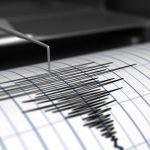 Animals
Animals  Animals
Animals  History
History 10 Most Influential Protests in Modern History
 Creepy
Creepy 10 More Representations of Death from Myth, Legend, and Folktale
 Technology
Technology 10 Scientific Breakthroughs of 2025 That’ll Change Everything
 Our World
Our World 10 Ways Icelandic Culture Makes Other Countries Look Boring
 Misconceptions
Misconceptions 10 Common Misconceptions About the Victorian Era
 Mysteries
Mysteries 10 Strange Unexplained Mysteries of 2025
 Miscellaneous
Miscellaneous 10 of History’s Most Bell-Ringing Finishing Moves
 History
History 10 Great Escapes That Ended Right Back in Captivity
 Weird Stuff
Weird Stuff 10 Fascinating Things You Might Not Know About Spiders
 Animals
Animals 10 Animals That Humiliated and Harmed Historical Leaders
 History
History 10 Most Influential Protests in Modern History
 Creepy
Creepy 10 More Representations of Death from Myth, Legend, and Folktale
Who's Behind Listverse?

Jamie Frater
Head Editor
Jamie founded Listverse due to an insatiable desire to share fascinating, obscure, and bizarre facts. He has been a guest speaker on numerous national radio and television stations and is a five time published author.
More About Us Technology
Technology 10 Scientific Breakthroughs of 2025 That’ll Change Everything
 Our World
Our World 10 Ways Icelandic Culture Makes Other Countries Look Boring
 Misconceptions
Misconceptions 10 Common Misconceptions About the Victorian Era
 Mysteries
Mysteries 10 Strange Unexplained Mysteries of 2025
 Miscellaneous
Miscellaneous 10 of History’s Most Bell-Ringing Finishing Moves
 History
History 10 Great Escapes That Ended Right Back in Captivity
 Weird Stuff
Weird Stuff 10 Fascinating Things You Might Not Know About Spiders
Ten Astonishing Ways That the Earth Is Evolving
Our planet is in constant flux. Earth’s poles are shifting. The magnetic field is dropping in strength. Gold is seeping out of the core. We might not notice it in our daily lives, but the world that we call home is shifting and developing in ways that science doesn’t fully understand. New oceans spring up, sea currents disappear, and waste morphs into rocks, to name just a few.
Here are ten of the astounding ways that our planet is evolving, whether we like it or not.
Related: 10 Strange Facts about the Planet Mercury
10 Magnetic Field Weakening
Earth’s magnetic field is growing weaker. Our planet is surrounded by vast, shifting forces that keep us shielded from solar particles and cosmic rays. It often varies in power and direction, but scientists have noticed a worrying downward trend in the field’s strength.
Over the past 200 years, the global average field strength has dropped by 9%. One of the most affected regions is the South Atlantic Anomaly, which stretches between Africa and South America. Since 1970, the field strength in that area has fallen by 2,000 nanoteslas, while the region itself has expanded and drifted to the west. What’s more, satellite data indicate that a second area of low field strength is opening up over southwest Africa. Scientists believe that the South Atlantic Anomaly could be about to split in two.[1]
9 Polar Vortex Shifting
The polar vortex is stretching, leading to a rise in extreme cold weather over North America. Scientists say the region of low pressure hovering above the Arctic is on the move. Alterations are causing the vortex to stretch and warp, sending whirls of freezing air over Canada and the US. Scientists say the rise in severe winters, heavy storms, and deep snow is linked to changes in the polar vortex.
In a 2025 study, scientists probed polar winds in the stratosphere—the middle region of the atmosphere that lies 12 miles above the Earth. They found that over the last 40 years, the vortex has often wobbled and deformed, frequently driving cold weather over North America. Experts reckon that changes in the vortex might be related to exceptionally cool periods in the Pacific Ocean known as La Niña. But so far, nobody can explain why the two events seem to coincide.[2]
8 Atlantic Currents Declining
Key currents in the Atlantic Ocean are slowing down, and scientists warn that this collapse could be driving an increase in extreme weather. A vast web of marine streams known as the Atlantic Meridional Overturning Circulation (AMOC) is in decline.
These currents help regulate the world’s climate. They act as a sort of oceanic conveyor belt along which heat, carbon, and nutrients travel from the tropics to the Arctic Circle. However, scientists say that AMOC is weakening and could be about to shift sharply. If this happens, it will be the currents’ first major change in over 10,000 years. Studies reveal that AMOC has already dropped by 15% since 1950.
Researchers are now trying to work out what the Atlantic circulation’s future looks like. Some believe it could be about to collapse at any point over the next 70 years, while others say the system is “very unlikely” to undergo major changes this century. If it does collapse, computer models suggest that Atlantic sea levels could surge as high as a meter. The Amazon’s wet and dry seasons may also switch over, and global temperatures are likely to go haywire.
“What surprised us was the rate at which tipping occurs,” said Utrecht University’s René van Westen, who led a study into saline levels in the Atlantic. “It will be devastating.”[3]
7 North and South Poles Shifting
Believe it or not, humans have stored so much water in dams that it has altered the position of the Earth’s poles. The North and South Poles are now both slightly misaligned with the axis of rotation thanks to the weight of the aqua pressing down on the planet.
People have built nearly 7,000 dams since 1835. Enough water is stored behind these levees to fill the Grand Canyon twice. The combined weight causes the Earth’s rocky outer layer to shift and wobble. This causes the poles to bob about, which scientists describe as true polar wander. Over the past nearly 200 years, the poles have drifted around a meter (three feet), while global sea levels have trickled down by 21 millimeters.
From 1835 until the mid-20th century, there was a boom in dam building across North America and Europe. This caused the North Pole to wander 7.9 inches (20 cm) in the direction of Russia, Mongolia, and China. After that, Asia and East Africa started getting in on the act, which shifted the pole over half a meter toward the west. In total, the North Pole has traveled around 3.7 feet (113 cm) in just under two centuries.[4]
6 New Ocean Forming
Below Ethiopia, molten rock is throbbing as the planet prepares to spew out a new ocean—or so some scientists suggest. In a 2025 study, researchers from across Europe put forward the idea that a new ocean might be on its way. Mantle rock is pluming toward the surface underneath the Afar region. They say the continent is at risk of being torn apart, which could create a basin for a new ocean.
The Earth’s crust is made up of giant, slowly moving slabs or plates. When these plates start to drift apart, the boundaries are known as tectonic rifts. Afar is vulnerable to changes from inside the Earth because it sits at a junction of three plate boundaries. The Main Ethiopian Rift, the Red Sea Rift, and the Gulf of Aden Rift all meet in the region.
These plates will take millions of years to pull apart, but eventually, scientists say a new ocean could be created. “At the present rate, a sea about the size of the current Red Sea might form in about 20–30 million years,” Earth science professor Ken Macdonald told reporters.[5]
5 Rocks Forming from Industrial Waste
Across the planet, new rocks are forming at an unexpected pace as industrial waste morphs into stone. Researchers in Britain discovered that old refuse takes just decades to turn into rocks—far quicker than they expected.
A group from the University of Glasgow looked into what they call the “rapid anthropoclastic rock cycle.” They studied a 1.2-mile (2-km) stretch of coast where new cliffs have formed out of the deposits from old metal foundries. Scientists were amazed to find items as recent as a tab from a metal drinks can and a coin from the 1930s embedded in rock. Further studies revealed highly reactive elements in the slag, like calcium and iron. These minerals cause the refuse to turn to rocks at an unprecedented rate.
As Dr. Amanda Owen commented, “For a couple of hundred years, we’ve understood the rock cycle as a natural process that takes thousands to millions of years. What’s remarkable here is that we’ve found these human-made materials being incorporated into natural systems and becoming lithified—essentially turning into rock—over the course of decades instead.”[6]
4 Energy Imbalance Soaring
A data map from NASA satellites suggests that the Earth’s energy imbalance is surging much more rapidly than predicted. The energy imbalance tells us how much energy our planet gets from the sun versus how much we send out into space.
NASA surveys found that the imbalance has at least doubled over the last 20 years. The figure hit 1.8 watts per square meter in 2023, which is twice as high as scientists thought it would be. Experts are still not sure why the energy imbalance overshoots their predictions by such a large degree.
What’s more, many of the spacecraft responsible for monitoring the energy coming in and going out will soon be out of use. Scientists are worried that, as the figure continues to rise erratically, they may struggle to keep track of this important marker of our ever-changing world.[7]
3 South Africa Rising
As our planet evolves, scientists say South Africa is rising gradually out of the ocean by a few millimeters each year. Scientists at the University of Bonn studied data from a web of satellite stations scattered across the country. They found the nation had ascended by an average of 6 millimeters (a quarter of an inch) from 2012 to 2020.
Scientists are still trying to figure out why this unusual rise is happening. Some say that mantle flow is pushing the country upwards. They point to a swelling in the Earth’s crust known as the Quathlamba hotspot. However, others think a lack of water could be to blame. They say that the areas of South Africa that have risen the most tend to be the ones that have also suffered the most intense droughts. In their view, the loss of water mass could be driving the uplift.[8]
2 Core Leaking Gold
Gold and precious metals are spilling out of the center of the Earth—or at least that’s what new research suggests. The core is home to 99.99% of the planet’s gold deposits. The valuable minerals were confined 4.5 billion years ago when the Earth was first born, and now lie 1,900 miles (3,000 km) underground.
Until recently, scientists believed that material in the core was locked away and nearly impossible to access. But new evidence suggests that might not be the case. In a 2025 study, geochemists picked up signs that precious metals are leaking into the mantle and making their way to the surface. They detected ruthenium, a rare metal similar to platinum, in volcanic rocks from Hawaii. Analysis suggests that the elements found in these rocks originated from deep underground.
As University of Göttingen researcher Nils Messling put it, “When the first results came in, we realized that we had literally struck gold!”[9]
1 Spin Accelerating
Earth has started to spin so much quicker than usual that days have actually become marginally shorter. The planet’s rapid rotation has shaved a fraction of a second off some summer days in 2025. July 9 and July 22 were shrunk by 1.3 and 1.4 milliseconds, respectively. Even shorter days are expected to follow.
Meteorologists first reported in 2020 that the Earth’s spin was causing days to shrink slightly in length. The planet’s rotation speed is affected by all kinds of factors, like the position of the moon and sun, and its gravitational field.
A millisecond or two here and there might not seem like much. However, GPS systems, computers, banking networks, and plenty more around the world all rely on pinpoint synchronicity. Even a fraction of a second can skew the systems. As the Earth’s spin accelerates, scientists are debating whether they need to add a leap second to their instruments to account for the mildly trimmed days.[10]








